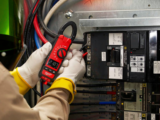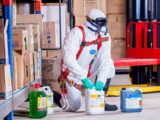
How To Fix Concrete Floor Spalling The Right Way
March 16, 2023In the case of concrete floors, there are two main types of damage: spalling and cracking. Spalling is when the top layer of your concrete cracks off and falls away. It’s a common problem in dry climates. Cracking happens when there’s too much moisture in your concrete, and it can’t absorb it all. Luckily, both problems are easy to fix with a few simple steps! Here’s how you can fix Concrete Floor Spalling:
- Remove The Bad Concrete
Remove all of the damaged concrete from your area, and make sure to sweep up all of the dust and debris. You will want to use a hammer drill and hammer chisel to remove any concrete that is loose or broken away. You should also use a concrete saw if there is any damage that just needs a few cuts in order to remove it from your home.
- Clean The Surface Of The Existing Concrete
Once you have removed all of the bad concrete, it is time to clean up what is left over on the surface. Use a pressure washer with an adjustable nozzle and soap solution in order to clean off all of the residue and dirt from your home’s flooring surface. Make sure that there are no streaks left behind after using this method, because these can cause discolouration once you start applying new coatings onto your concrete floors.
- Sand The Surface Of The Surface Of The Existing Concrete
After you’ve removed any loose debris and dirt, it’s time to start sanding. Use a palm sander with medium grit sandpaper to smooth out your concrete floor. Work in small sections at a time, sanding until you have a smooth surface. If you’re working with large areas or if you need to get rid of deep scratches, use a drum sander with fine-grit sandpaper instead. You can also use an orbital sander if you want to save time and energy. Just be sure to move in straight lines so that you don’t leave marks behind on your concrete flooring.
- Apply An Epoxy Primer
After you’ve finished sanding down your existing concrete floor, it’s time to apply epoxy primer. This will help prepare the surface for paint or stain by filling in any cracks or holes in the surface of your floor. It also helps protect against moisture damage and prevents mould growth in those same areas where water can collect — which is why we recommend using an epoxy primer over any other type of primer for this application!
- Use A Mortar Mix For Patching Or Scratch Coats
You can use a mortar mix to patch small areas of spalling concrete. Mix the mortar with sand, gravel and cement in equal parts, then spread it over the affected area and let it dry. When the mortar dries, clean off any excess and apply a thin layer of waterproofing sealant to keep water from getting through to the subflooring below.
- Cover Your Floor With A Base Coat
The base coat is usually the first layer of paint applied to your concrete surface and it serves as an anchor for subsequent coats of paint or stain. If you are applying a colour finish coat over an existing coloured base coat, apply it before you apply any other coats of paint or stain. For example, if you have already painted your floor with a brown base coat and want to apply a red topcoat, then first apply the brown base coat before applying the red topcoat so that it will stick better over both coats of paint/stain rather than just one layer alone.
- Apply Your Topcoat(S) / Desired Colour Finish Coatings
Once you have applied the sealer, allow it to cure for 24 hours. The sealer will not be fully cured until it has had time to cure, so don’t apply any more coats until the sealer has fully cured. Once it has, you can start applying your topcoats.
- Seal Your Topcoats With A Sealant Or Desired Finish
If you plan on sealing your concrete floor with a sealant, now is the time to do so. You can use an acid stain if you want to enhance the look of the concrete even further, but be sure that whatever product or process you use does not damage or discolour your newly sealed floor. Use caution when choosing products that contain acids or other chemicals, as they may react negatively with your new finish and cause damage to your concrete flooring surface. Once again, let everything cure for 24 hours before moving on to the next step!
- Let Cure Before Use
Once you’ve applied your final topcoat and allowed it to dry, it’s time to take advantage of your gorgeous new floor! But make sure you wait at least 3 weeks before using your new concrete surface for anything other than walking around on it. Concrete is extremely porous when wet and needs time for that moisture to evaporate before becoming completely hardened. The wait is worth it, though; concrete floors have remarkable durability and can last for decades with proper care!
Conclusion:
There are many factors that can cause concrete floor spalling. However, you can protect your floors from further damage and future spalling issues by sealing and coating them. If it’s difficult for you to do it yourself, you should hire the services of professionals like Tecorp.







